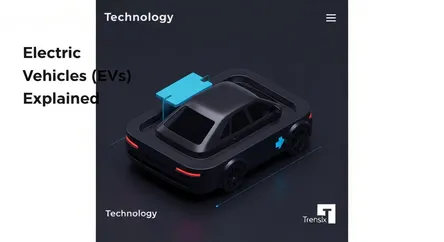Technology
Electric Vehicles (EVs) Explained

Discover what Electric Vehicles (EVs) are, why they're gaining popularity, and how they are transforming the way we drive and think about transportation.
What is it?
An Electric Vehicle (EV) is a car that is propelled by one or more electric motors, using energy stored in rechargeable batteries. Unlike conventional internal combustion engine (ICE) vehicles that burn gasoline or diesel, EVs produce zero tailpipe emissions, running entirely on electricity. They are charged by plugging into an external power source, which can range from a standard household outlet to a dedicated high-speed charging station. Key components include the battery pack, an inverter to convert DC power to AC for the motor, and the electric motor itself, which provides instant torque for quick acceleration.
Why is it trending?
EVs are trending due to a convergence of factors. Growing environmental concerns about climate change and air pollution are pushing consumers and governments towards cleaner transportation. Many countries offer significant financial incentives, like tax credits and rebates, to encourage adoption. Simultaneously, rapid advancements in battery technology have led to longer ranges, faster charging times, and decreasing costs, making EVs more practical and affordable for the average consumer. The success of pioneers like Tesla has also spurred traditional automakers to invest heavily in their own electric lineups, increasing market competition and choice.
How does it affect people?
For individuals, owning an EV can mean lower running costs due to cheaper electricity compared to gasoline and reduced maintenance needs (no oil changes). The driving experience is often smoother and quieter. However, it also requires a shift in mindset, involving planning for charging on longer trips and potentially installing a home charging station. On a broader scale, the rise of EVs is transforming the automotive industry, creating new jobs in battery manufacturing and software development while challenging traditional manufacturing roles. It is also driving significant investment in upgrading national power grids and building out a robust public charging infrastructure.